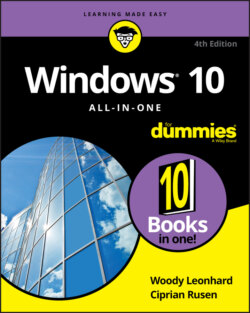Читать книгу Windows 10 All-in-One For Dummies - Ciprian Adrian Rusen, Woody Leonhard - Страница 71
THE DIFFERENCE BETWEEN EDITIONS AND VERSIONS
ОглавлениеA bit of semantic squabbling. Microsoft makes a distinction between versions of Windows and editions of Windows. In fact, they’re two terms — generally interchangeable in the real world — for entirely different Windows animals.
Windows versions started with the venerable Windows 1.0, continued through Windows XP and Windows 7, and reached their lofty heights with Windows 10. In the past, a version change was a big bump — from Windows Vista, for example, to Windows 7. With the advent of Windows 10 and Microsoft’s much-ballyhooed Windows as a Service, the version bumps are tiny. Almost imperceptible in some cases — but when you install them, you basically get a completely new copy of Windows.
Versions in Windows 10 often come with nonsensical names such as the Fall Creators update version or Spring Forward Fall Back Stand Up Sit Down Fight Fight Fight version. Most people just give them numbers, which correspond roughly to when they were released — ergo, Win10 version 1607 and 1709 and 2004. I talk about the version numbers in Book 1, Chapter 2. Where version used to signify a major shift in WinStuff, now it's a tiny bump.
Editions, on the other hand, refer to capabilities of an individual copy of Windows. You probably know about Windows Home and Windows Pro. Once upon a time, we had a Windows Ultimate, but it died with Windows 7, which was the last to have some meaningful stuff added to it.
If you haven’t yet bought a copy of Windows, you can save yourself some headaches and more than a few bucks by buying the right version the first time. And if you’re struggling with the 32-bit versus 64-bit debate, illumination — and possibly some help — is at hand.
